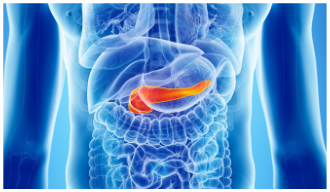Clinical trial published in peer-reviewed journal demonstrates diagnostic yield from Cellvizio® significantly exceeds standard of care (84.1% vs 34.1%); use of Cellvizio drives overall change in clinical management – including need for continued surveillance or surgery – in 42.3% of cases
Mauna Kea Technologies today announced a publication that demonstrates how Cellvizio positively impacts the diagnostic yield and the clinical management of pancreatic cystic lesions (PCL). The article, entitled “Impact of EUS-guided microforceps biopsy and needle-based confocal laser endomicroscopy on the diagnostic yield and clinical management of pancreatic cystic lesions” was published in Gastrointestinal Endoscopy (2019, DOI: 10.1016/j.gie.2019.12.022). The article was authored by the team of physicians that conducted the study, which was comprised of members from both the Division of Gastroenterology, and the Department of Pathology, at the Icahn School of Medicine at Mount Sinai, New York.
Currently, the standard of care (SOC) for the diagnosis of PCLs relies upon the combination of clinical, morphologic (from cross-sectional imaging), cyst fluid chemical and cytologic analysis cyst fluid, with relatively low accuracy, with more than 50% of cysts missing cytological confirmation after fine-needle-aspiration (FNA). The management of PCLs using SOC is further challenged by the lack of optimal diagnostics and divergent patient management guidelines.
The primary objective of this study was to compare the diagnostic yield and change in clinical management for microforceps biopsy (MFB) and Cellvizio’s nCLE with the current SOC. The results of this study clearly demonstrate that MFB and nCLE lead to significant improvements in specific PCL diagnosis, which in turn has major impact in clinical management. Highlights from the study include:
- Compared to the standard of care, the use of MFB, nCLE, and their combination, led to overall changes in clinical management in 38.6%, 43.2%, and 52.3% of patients, respectively.
- MFB and nCLE led to an overall increase in discontinuation of surveillance for 34.1% and 31.8% of patients respectively (p<0.05 compared to SOC), eliminating the indication for follow-up radiologic or endoscopic studies for 34.1% and 38.6% of patients respectively (p<0.05 compared to SOC).
- Based on MFB and nCLE, 2 out of 28 (7.1%) and 3 out of 28 (10.7%) patients respectively who would have undergone further surveillance were referred for surgery.
“In our study evaluating advanced diagnostic techniques in pancreatic cystic lesions, we found that nCLE was one of the modalities associated with significantly higher diagnostic yield, when compared to standard of care, and its use had a major impact on changing clinical management decisions, including the need for continued surveillance or surgery,” said Christopher J. DiMaio, M.D, Associate Professor of Medicine and Director of Interventional Endoscopy in the Division of Gastroenterology, Icahn School of Medicine at Mount Sinai Hospital in New York. “The addition of advanced diagnostic techniques, such as nCLE, to standard cyst fluid chemistry and cytology should be considered when performing EUS-FNA of pancreatic cystic lesions.”
“The characterization of pancreatic cysts remains a major medical challenge around the world, with more than 2.6% of the U.S. population over 40 years old having pancreatic cystic lesions,” said Robert L. Gershon, Chief Executive Officer of Mauna Kea Technologies. “This new clinical study from Dr. DiMaio and colleagues from the Icahn School of Medicine at Mount Sinai Hospital in New York validates that using Cellvizio is not only safe, but also leads to significant changes in clinical management for patients who present with pancreatic cystic lesions. Importantly, this study further enhances the growing body of evidence – including the recently published INDEX and CONTACTII studies1 – which demonstrate significantly higher diagnostic accuracy with Cellvizio versus the standard of care. We are encouraged by the strong clinical results of this study and believe the evidence of changing patient management for pancreatic cysts will help drive adoption in the U.S. going forward.”


